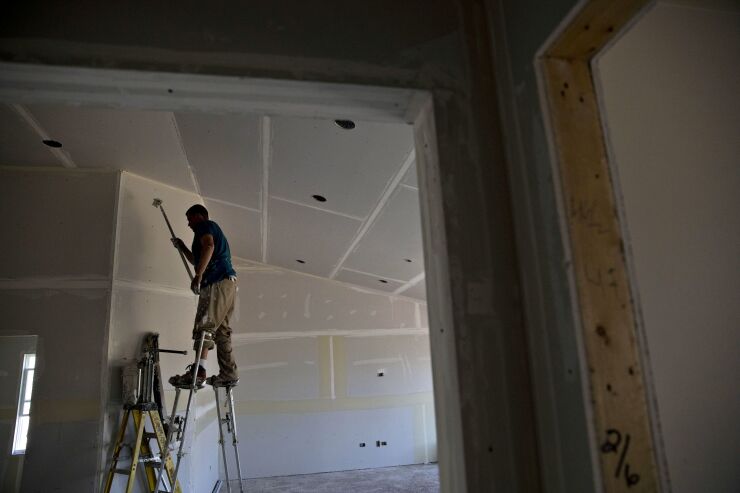New U.S. home construction dropped in May, highlighting the impacts of ongoing
Residential starts declined 14.4% last month to a 1.55 million annualized rate, the lowest in more than a year, according to government data released Thursday. The median forecast called for a 1.69 million pace. April construction was revised sharply higher to a 1.81 million rate, which was the strongest since 2006.
Applications to build, a proxy for future construction, fell to an annualized 1.7 million units, the lowest since September.
The monthly decline in starts was the largest since April 2020 and suggests residential construction is coming under pressure as higher mortgage rates take an even bigger toll on demand. Still, with the pace of building permits exceeding starts, homebuilding in the near-term may hold up.
The figures come after the Federal Reserve
The government’s report showed single-family housing starts declined 9.2% to an annualized 1.05 million rate, the slowest since 2020. Construction of multifamily dwellings plunged 23.7% to a 498,000 rate, the weakest since November.
Builder Backlogs
Still, builder backlogs remain elevated. The number of total homes authorized for construction but not yet started rose 0.7% in May. The number of single-family properties under construction was unchanged from a month earlier at the highest level since 2006.
At the conclusion of the Fed’s policy meeting, Chair Jerome Powell indicated home prices may be slow to cool given the limited number of properties on the market.
“There’s a tremendous amount of supply in the housing market of unfinished homes, whereas the inventory of finished homes for sale is incredibly low, historically low, so it’s still a very tight market,” Powell said at a press conference. “Prices might keep going up for a while even in a world where rates are up.”
A separate
The housing starts data are subject to large revisions; the report showed 90% confidence that the change in May starts ranged from declines of 5.5% to 23.3%.






